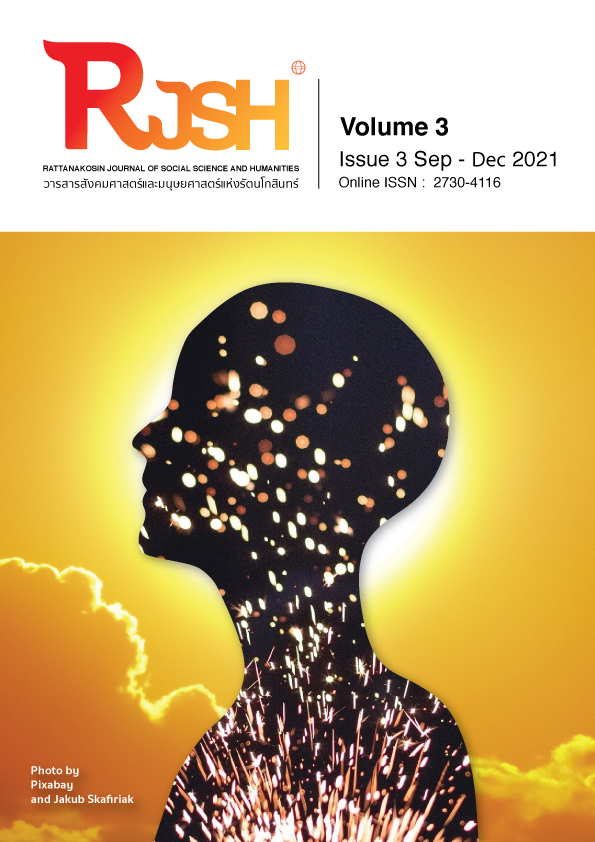Planning of Agricultural Production by Using Linear Programming Model Based on the Concept of Sufficiency Economy in the Area of Prachuap Khiri Khan Province
Main Article Content
Abstract
The purposes of this research were Analyze agricultural production planning using linear programming model based on the concept of sufficiency economy in the area of Prachuap Khiri Khan Province and Study the results of the planning applied to the farmers. The population of this research was farmers who have produced their own land in Prachuap Khiri Khan Province, and selected samples by purposive sampling method 2 people. The data analysis was used linear programming for analyze planning.
The results of the study were as follows Planning of agricultural production by using linear programming model based on the concept of sufficiency economy there are 5 cases are the case of household labor has 1 person, 2 persons, 3 persons, 4 persons and 5 persons. For example, the case of labour has 2 persons, land 3 rai, capital 30,080 baht, 1,025 labour hours, 3,818 cubic meters of water and receive net income 156,400 baht. This planning using applied to 2 farmers in the Wang Pong sub district Pran Buri Prachuap Khiri Khan Province. That helps farmers income increased more from the traditional production average 41.75 percent.
Article Details
The content within the published articles, including images and tables, is copyrighted by Rajamangala University of Technology Rattanakosin. Any use of the article's content, text, ideas, images, or tables for commercial purposes in various formats requires permission from the journal's editorial board.
Rajamangala University of Technology Rattanakosin permits the use and dissemination of article files under the condition that proper attribution to the journal is provided and the content is not used for commercial purposes.
The opinions and views expressed in the articles are solely those of the respective authors and are not associated with Rajamangala University of Technology Rattanakosin or other faculty members in the university. The authors bear full responsibility for the content of their articles, including any errors, and are responsible for the content and editorial review. The editorial board is not responsible for the content or views expressed in the articles.
References
กนกวรรณ สุถินาถ และศัลยา อักษรมัต. (2541). เศรษฐกิจพอเพียง กู้วิกฤติเศรษฐกิจไทย, วารสารส่งเสริมการลงทุน, 11(11), 14-23.
ไพฑูรย์ รอดวินิจ. (2522). ลิเนียโปรแกรมมิ่งกับปัญหาทางเศรษฐศาสตร์. ภาควิชาเศรษฐศาสตร์เกษตร คณะเศรษฐศาสตร์และบริหารธุรกิจ, มหาวิทยาลัยเกษตรศาสตร์.
มูลนิธิชัยพัฒนา. (n.d.). พระบรมราโชวาท เนื่องในโอกาสวันเฉลิมพระชนมพรรษา ณ ศาลาดุสิดาลัย วันที่ 4 ธันวาคม 2539. สืบค้นเมื่อ 21 ตุลาคม 2564 จาก https://chaipat.or.th
ศรัณย์ วรรณนัจฉริยา. (2532). การวิเคราะห์แผนการผลิตทางการเกษตร. ภาควิชาเศรษฐศาสตร์เกษตรและทรัพยากร มหาวิทยาลัยเกษตรศาสตร์.
ศูนย์การเรียนรู้ทางไกลเศรษฐกิจพอเพียง มหาวิทยาลัยสุโขทัยธรรมาธิราช. (n.d.). พระบรมราโชวาทในพิธีพระราชทานปริญญาบัตรของ มหาวิทยาลัยเกษตรศาสตร์ 18 เมษายน 2503. สืบค้นเมื่อ 21 ตุลาคม 2564 จาก https://stou.ac.th.
สำนักงานเศรษฐกิจการเกษตร. (2545). สถิติการเกษตรของประเทศไทยปีการเพาะปลูก 2543/44. กรุงเทพฯ.
Beneke, R.S., & Winerboer, R. (1973). Linear Programming: Application to Agriculture. The Iowa State University Press, Ames, Iowa.
Hazell, P.B.R., & Norton, R.D. (1986). Mathematical Programming for Economic Analysis in Agriculture. Macmillan Publishing Company, New York.


